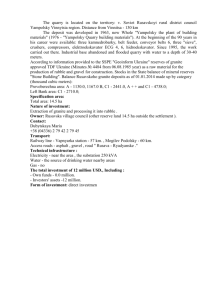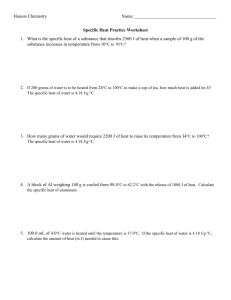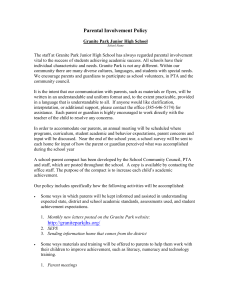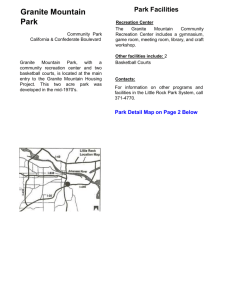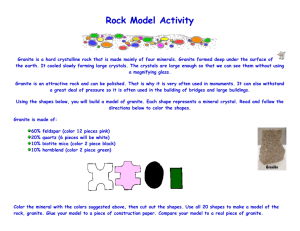exercise 1
advertisement
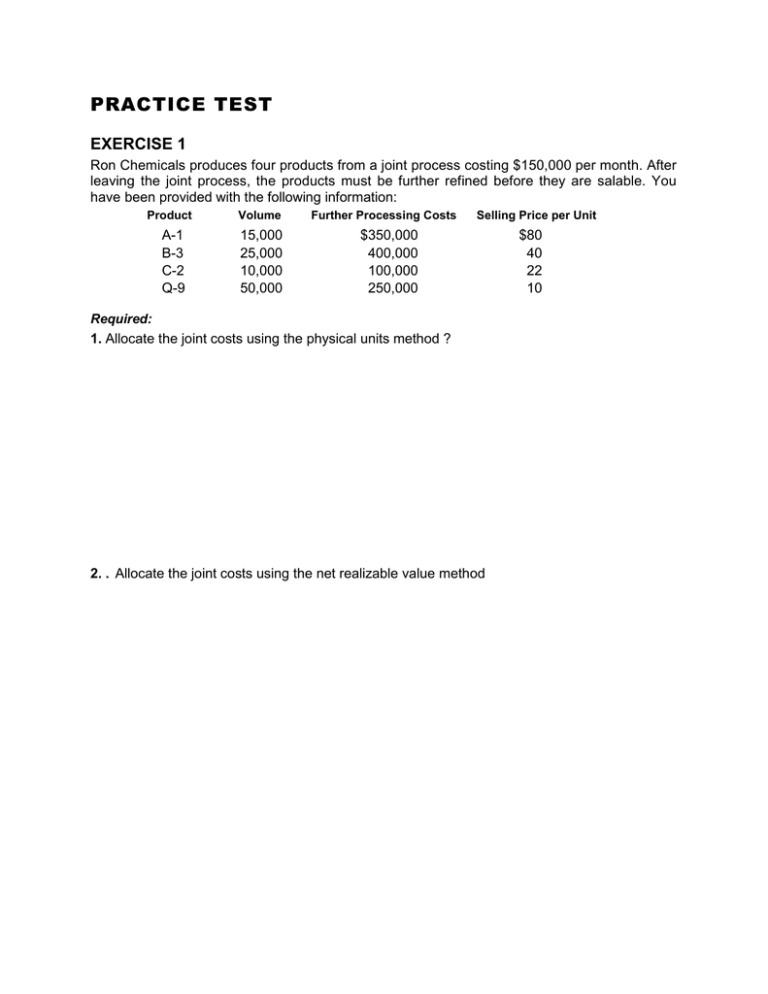
PRACTICE TEST EXERCISE 1 Ron Chemicals produces four products from a joint process costing $150,000 per month. After leaving the joint process, the products must be further refined before they are salable. You have been provided with the following information: Product A-1 B-3 C-2 Q-9 Volume 15,000 25,000 10,000 50,000 Further Processing Costs Selling Price per Unit $350,000 400,000 100,000 250,000 Required: 1. Allocate the joint costs using the physical units method ? 2. . Allocate the joint costs using the net realizable value method $80 40 22 10 EXERCISE 2 : Bishop Corporation produces three products at a joint manufacturing cost of $1,250,000. The following information has been provided: Product Volume A B C 25,000 40,000 35,000 Further Processing Costs $750,000 750,000 210,000 Selling Price per Unit $40 50 20 Required: Allocate the joint costs using the constant gross margin percentage method. EXERCISE 3 Quorum, Inc., has joint processing costs of $1,000,000. There are no further processing costs. The demand for Quorum’s products has been fluctuating greatly; production has remained relatively constant. The following information for the past year has been provided: Product Units Sold Q-80 R-34 S-99 T-14 U-62 25,000 40,000 35,000 50,000 75,000 Selling Price per Unit Units Produced $4.00 5.00 2.00 1.50 3.50 Required: Allocate the joint costs using the sales-to-production-ratio method. 30,000 30,000 50,000 60,000 80,000 EXERCISE 4 Granite City Monument Works is a manufacturer of cemetery headstones and architectural granite slabs. Granite City excavates blocks of granite from its quarry from its joint processes of Quarry and Cutting. Two joint products (cemetery monuments and architectural granite) are produced along with a by-product called grit. Cemetery monuments are cut, polished, and engraved in a variety of standard shapes, sizes, and patterns and sold to funeral homes. Architectural granite slabs are special-ordered by contractors for office buildings. These slabs are cut and polished to exacting specifications. The small pieces of granite resulting from the cutting process are crushed and sold to farm-supply outlets as poultry grit. Granite City has provided the following costs and output information: Process Cost Tons of Output Quarry $350,000 100,000 Cutting 250,000 90,000 Monuments 300,000 25,000 Granite slabs 400,000 60,000 Grit 10,000 5,000 Quarry and Cutting are joint processes. A local farm-supply distributor purchases all of the grit that is produced at $40 per ton. Assume that Granite City uses the physical units method to allocate joint costs. Required: 1. What would be the cost per ton of monuments and granite slabs, assuming that the grit is accounted for as “Other Income”? EXERCISE 4 (Continued) 2. What would be the cost per ton of monuments and granite slabs, assuming that the grit is accounted for as by-product revenue deducted from the main product cost? EXERCISE 5 Taldot Company produces three products (X, Y, and Z) in a joint process costing $100,000. The products can be sold as they leave the process, or they can be processed further and sold. The cost accountant has provided you with the following information: Product Unit Volume Sales Price at Split-Off Separable Further Processing Costs X 3,000 $10 $60,000 Y 4,000 15 50,000 Z 8,000 20 90,000 Assume that all processing costs are variable costs. Sales Price After Further Processing $25 30 35 Required: Which products should Taldot sell at split-off, and which products should be processed further?


